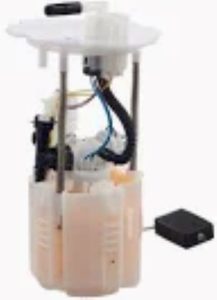Low fuel pressure can be a big hurdle for any vehicle because when the vehicle does not get proper fuel flow, it will not work at its maximum efficiency and average performance. By diagnosing and fixing the issue of low fuel pressure from the fuel pump, keep your car running smooth to its best potential.
2: Check the Fuel Pump Relay The obvious starting point is to just check the fuel pump relay. In rare instances a relay is able to stop power to the pump intermittently. Testing the RelayLocate and Remove the RelayTest for Voltage Output using a Multimeter Check if it is around 12 volts, matching the specs in your vehicle's service manual.
Check Fuel Lines for Leaking or Obstruction: Your fuel lines can develop leaks and blockages that reduce pressure. Visually inspect lines and manually check for moisture/smell gasoreif you smell gasoline, it is a leaking line. You can use compressed air to blow these lines out if something is clogged. Investing in replacement of any damaged sections is a critical aspect because the smallest leak can substantially impact fuel pressure.
Clogged Fuel Filter: Low fuel pressure is generally caused, to some degree at least, by a clogged (or partially clogged) fuel filter. Filters- every 15,000 — 20,000 miles The dust particles are filtered away, but fuel is allowed to pass through the filter providing a clear path to the engine and preserving its pressure. Neglecting this service can result in a 10% loss of engine power.
Fuel Pressure Gauge Placement: The picture shows a fuel pressure gauge connected to the test port on the fuel rail. The test is straightforward: Simply connect the gauge, have a helper fire up the engine and check for the appropriate pressure (usually 30 to 60 psi, depending on the vehicle); if you read less than spec', then you know it's likely that fuel pump going south, or else that your pressure regulator has begun acting up.

Check the Fuel Pressure Regulator: A damaged pressure regulator will either over or under pressure. Disconnect the vacuum line from the regulator; if fuel is released at that connection, then the diaphragm of the regulator has ruptured and it have to be substituted.
Examine Electrical Connections: Check all electrical connections on the fuel pump seeming closely at any and all points of corrosion. Corrosion or loosening of the connections can also decrease the voltage to the pump, and this will affect how much pressure it can deliver. Clean all contact and tighten up all connections.
Test or Replace the Fuel Pump: If all other parts are in good condition, it may be that the problem is with the fuel pump itself, so test if this component is generating enough pressure. Perform a flow and pressure bench test (should be within manufacturer specs). If the pump fails, obviously its time to replace it. Go with a good quality replacement pump to eliminate problems in the future.
There is a quote by Henry Ford “When quality means doing it right when no one is looking”. This is particularly true about vehicle maintenance. By identifying and repairing every potential problem one by one, this can not only bring a motor back to full omp potential it can also tka e years off the life of an engine.
To learn more about different fuel pump models with information on their specs please visit Fuel Pump That way, you can locate the pump for your vehicle that suits what care and maintenance (if any) is recommended.